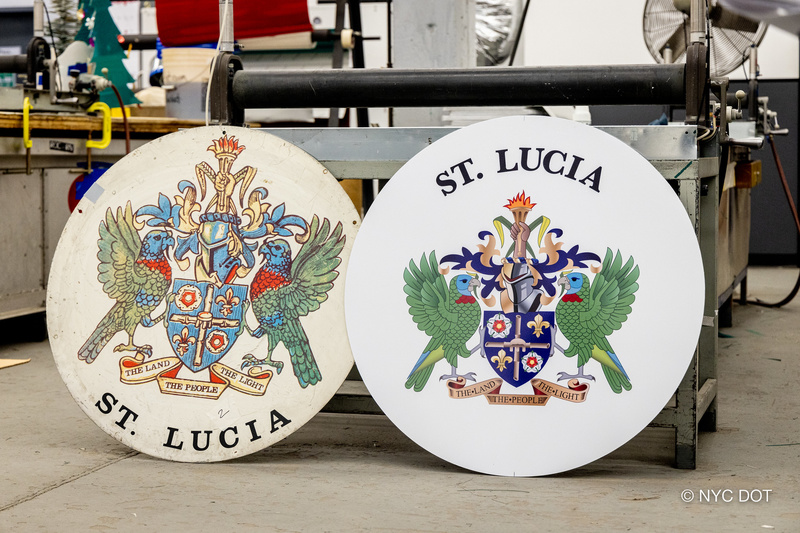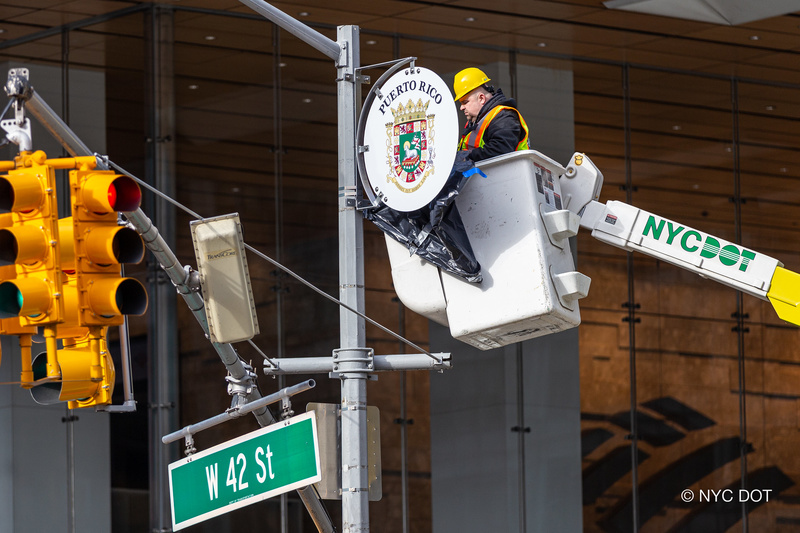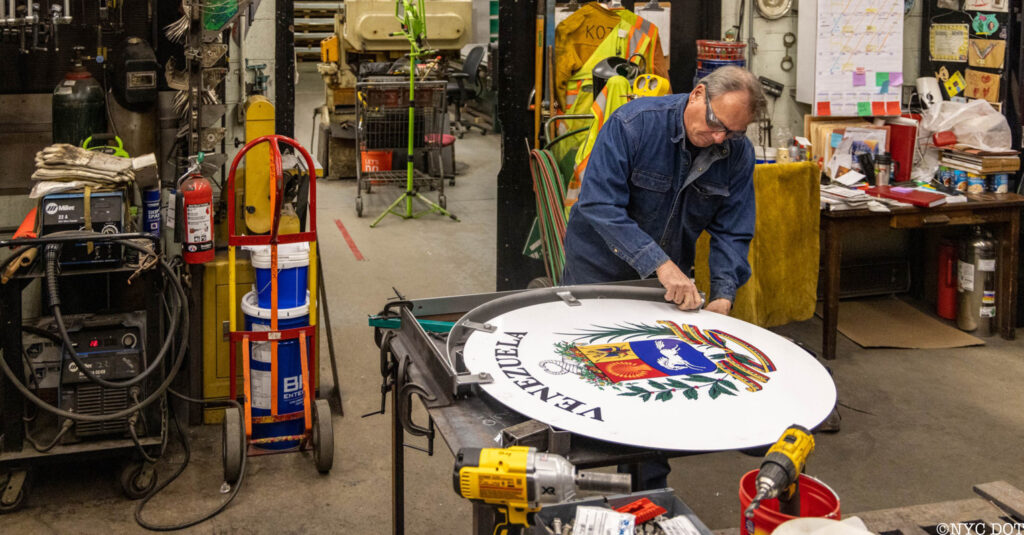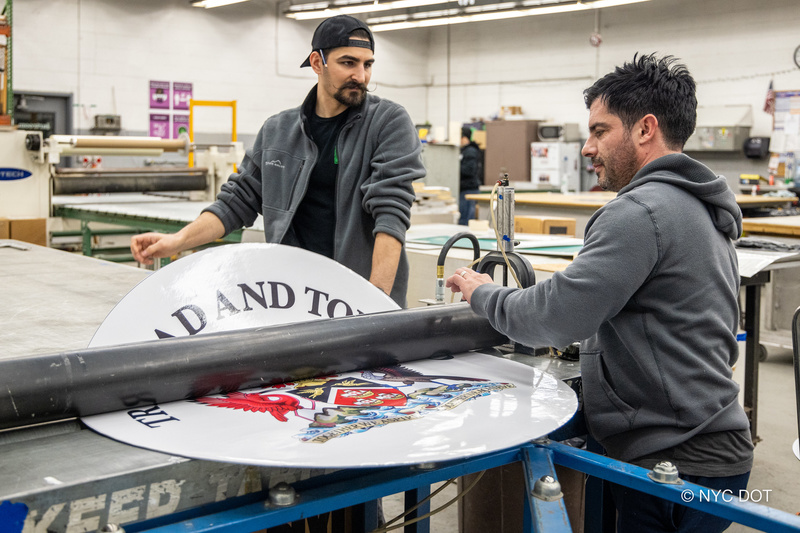Something has been missing from the lampposts along the Avenue of the Americas for decades. Hanging from the street lights, passersby would have once seen 300 different medallions, or shields, representing the countries and territories of the Western Hemisphere. Only 22 remained as of 2016. In January, the New York City Department of Transportation completed the first phase of a restoration project that will bring back 45 of the lost Avenue of the Americas medallions from West 42nd to West 59th Streets.

The first nine medallions installed bear the insignia of the Dominican Republic, Puerto Rico, Mexico, Colombia, Ecuador, Haiti, Argentina, St. Lucia, and Uruguay. The NYC DOT described the process of producing these signs on Twitter. First, the design for each medallion is reviewed by multiple NYC DOT employees, the NYC Public Design Commission, and the relevant embassies and consulates to ensure all names, spelling, and insignia designs are correct. Next, the signs are fabricated at the DOT’s Maspeth Sign Shop.

At the sign shop, the medallions are printed, laminated, and mounted on sheets of aluminum. In-house DOT engineers and staff designed and winded tested the new signs to make sure they would hold up better than the originals. Measuring three feet in diameter, the new medallions are lighter and more weather-resistant than the originals, which were made out of porcelain enamel.
Workers at the shop also fit each sign with special brackets. These brackets are designed to be sturdy yet flexible, and easily adjustable for events such as the Macy’s Thanksgiving Day Parade when the medallions need to be removed to make way for the giant floating balloons. Once work at the sign shop is complete, DOT crews take the signs to the streets for installation on the lampposts along Sixth Avenue.
The country medallions were first introduced in 1959 under Mayor Wagner. In the previous decade, Mayor LaGuardia renamed Sixth Avenue “The Avenue of the Americas” as “an expression on the part of our people of the love and affection we have for our sister republics of Central and South America.” The country medallions, or shields as they were called, were a further expression of solidarity. Originally, 300 shields were installed from White Street to 59th Street.

Over the years, the signs began to rust and fall into disrepair. Many were taken down in the 1990s when lampposts along Sixth Avenue were replaced. The plan to restore the medallions was announced by DOT Commissioner Ydanis Rodriguez in October in commemoration of Hispanic Heritage Month.
“The creation of the Avenue of the Americas in 1945 was a great gesture that celebrated the cultures of our hemisphere, and these beautiful new medallions now once again properly honor the nationalities of so many of the people who live, work, and visit New York City,” said Commissioner Rodriguez.

The NYC DOT’s Sign Shop in Maspeth produces over 100,000 street signs a year or 9,000 to 12,000 each month. Everything from giant highway signs to tiny parking signs are fabricated at the shop. Once complete, the handcrafted signs make their way across all five boroughs. The shop will be busy creating the remaining country medallions over the coming months.
This article was originally featured on the website untappedcities.com and was reprinted with permission.
Editor’s Note: The original medallions from 1959 were also manufactured in Maspeth.




